Young Dr. Kildare

Brief Synopsis
Cast & Crew
Harold S. Bucquet
Lionel Barrymore
Lew Ayres
Lynne Carver
Nat Pendleton
Jo Ann Sayers
Film Details
Technical Specs

Synopsis
After completing medical school, young Dr. James Kildare returns to Dartford, Connecticut to see his mother Martha, father, Dr. Steve Kildare, and childhood sweetheart, Alice Raymond. The senior Dr. Kildare is disappointed that Jimmy wants to work at Blair General Hospital in New York, but wishes him well in his twenty dollar-a-month internship. On Jimmy's first day at Blair, he meets Dr. Leonard Gillespie, a brilliant, but gruff physician whose surgical career is now hampered by his confinement to a wheel chair. Though Gillespie pretends to disdain dedication and ideals, he sees that Jimmy could be a worthy successor. When Gillespie asks him to diagnose his condition, Jimmy reluctantly reveals that Gillespie has a melanoma and may only live a year. On Jimmy's first case, he is called to a bar where a man has collapsed. After examining the man, Jimmy is summoned to an attempted suicide at a boardinghouse. Jimmy tells Joe Wayman, his ambulance assistant to give the man oxygen on the way back to the hospital, then goes to the suicide case. Jimmy is able to save the life of the young woman, who will not reveal her name, but the man at the bar dies after Wayman, thinking that that man was merely drunk, failed to administer oxygen. When the man turns out to have been a prominent politician, Jimmy is blamed for the death and refuses to implicate Wayman. Jimmy's position changes, however, when the suicide case turns out to be Barbara Chanler, the daughter of a millionaire. Jimmy realizes that the girl is despondent, but disagrees with prominent psychiatrist Dr. Lane-Porteus, who diagnoses Barbara's condition as mental illness. Despite the attempts of hospital administrater, Dr. Walter Carew, to make him reveal what Barbara has told him, Jimmy refuses, so Carew suspends him. Despondent, Jimmy goes to a local bar and is surprised by Alice, who has come to New York with his parents. He tells her that he is going to return to Dartford, and when his parents arrive, he pretends that nothing is wrong. His mother knows that Jimmy is troubled and tell him to do what he thinks is right, no matter what the consequences. Taking his mother's advice, Jimmy goes to Barbara's fiancé, John Hamilton, and learns that he and Barbara had argued about her desire to go to the Blue Swan Club with shady race horse owner Albert Foster. Jimmy later confronts Barbara and she confesses that she had been with Foster that night and had gotten very drunk. She then went upstairs with him to a private room. Later, realizing that Foster had drugged her, she wandered the streets until she found the boardinghouse where she tried to kill herself. Now knowing the truth, Jimmy tells Barbara not to tell anyone else, but say that she tried to kill herself over an argument with John. A short time later, Barbara is fine, but Jimmy is dismissed by Dr. Carew, who does not know that Jimmy has helped her. Meanwhile, suspecting what has happened, Dr. Gillespie goes to Barbara and learns the truth. As Jimmy is packing to return to Dartford, Gillespie pays a surprise visit and tells him that the melanoma diagnosis was correct and he doesn't have much time to teach him everything he needs to know as his new assistant.

Director

Harold S. Bucquet
Cast
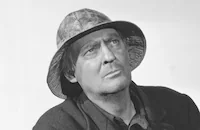
Lionel Barrymore

Lew Ayres

Lynne Carver
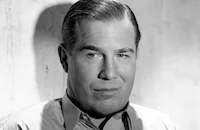
Nat Pendleton
Jo Ann Sayers
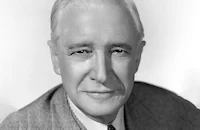
Samuel S. Hinds
Emma Dunn

Walter Kingsford
Truman Bradley

Monty Woolley

Pierre Watkin

Nella Walker
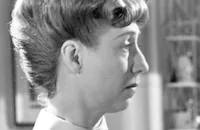
Marie Blake

Donald Barry
Don Castle

Phillip Terry
Roger Converse
Virginia Brissac
Leonard Penn
Clinton Rosemond
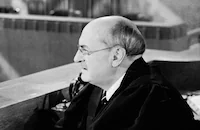
Granville Bates
Nell Craig
Barbara Bedford
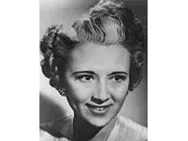
Bess Flowers
Grace Hayle
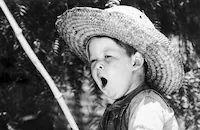
Bobs Watson
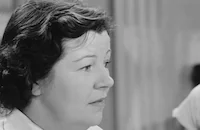
Margaret Bert
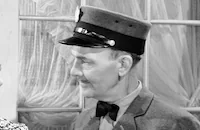
John Butler
Edwin Stanley
Harrison Greene
Tom Mcguire

Mary Mclaren
Janice Chambers
Franklin Parker
Stanley Taylor
Drew Demarest
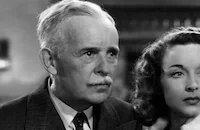
Howard Hickman
Brenda Fowler
Jessie Arnold
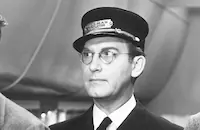
Emmett Vogan
Jack Woody
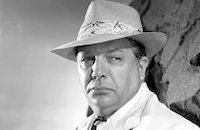
Cy Kendall
Murray Alper
Jack Murphy
Gilbert Russell
Cyril Ring
Frank Dae
Crew
Max Brand
Malcolm Brown
Cedric Gibbons
Willis Goldbeck
Horace Hough
Lou Ostrow
Harry Ruskin
John Seitz
Douglas Shearer
David Snell
Elmo Veron
Edwin B. Willis

Photo Collections
Videos
Movie Clip



Trailer
Hosted Intro
Film Details
Technical Specs

Articles
Young Dr. Kildare
Young Dr. Kildare introduces audiences to James Kildare, played by Lew Ayres, fresh out of medical school and planning to join his father's small town medical practice. Instead, Kildare accepts an internship at Blair General Hospital, under the curmudgeonly, wheelchair-bound diagnostician, Dr. Gillespie, played by Lionel Barrymore. (Barrymore had broken his hip in an accident, hence the wheelchair; later, his worsening arthritis kept him in the chair.) Gillespie drives Kildare hard, testing him and finding him worthy, and eventually becoming the young doctor's mentor, as Kildare decides to become a diagnostician. Other characters in this first film who would re-appear in subsequent ones were Nat Pendleton, as the ambulance driver and the series' comic relief; his girlfriend the switchboard operator, played by Marie Blake; and the head of the hospital, played by Walter Kingsford. Missing in the first installment was Laraine Day as Nurse Mary Lamont, Kildare's love interest, who made her first appearance in the second film, Calling Dr. Kildare (1939).
The onscreen chemistry between Ayres and Barrymore was evident from the beginning, and even before the film was finished, MGM began making plans for more. In fact, they tacked on a scene at the end of Young Dr. Kildare with the two stars announcing that there would be a series. Like the Andy Hardy series, the Kildare films would serve as an apprenticeship for some of the studio's attractive young contract players, such as Ava Gardner, Lana Turner, Red Skelton, and Donna Reed.
Lew Ayres was an unlikely movie star, an intellectual with a broad range of esoteric interests, who cared not at all for the trappings of fame. He had been in films for nearly a decade by the time he starred in Young Dr. Kildare, appearing in such prestigious productions as Garbo's last silent film, The Kiss (1929), the classic anti-war film All Quiet on the Western Front (1930), and Holiday (1938), with Katharine Hepburn and Cary Grant. Ayres would appear in nine Kildare films. But when the United States went to war in 1941, Ayres announced he was a conscientious objector, and refused to take up arms based on his religious beliefs. It was an unpopular position, and Ayres was reviled by the press and the film industry. Variety called him "a disgrace to the industry," and MGM dropped his contract. After stints at a labor camp and as a chaplain, Ayres put his "medical training" to good use, joining the Army Medical corps as a non-combatant orderly, and serving honorably in the Pacific. After the war, he worked as an actor only sporadically, spending his time studying philosophy and religion. However, he did appear in several well-regarded films, earning an Academy Award nomination for his role as a compassionate doctor in Johnny Belinda (1948).
After Ayres' departure from the Kildare series in 1942, the series' focus shifted to Dr. Gillespie, and Lionel Barrymore continued in the role in six more films. A series of actors played young doctors hoping to fill Kildare's shoes as Dr. Gillespie's protégé, including Van Johnson, Keye Luke, and James Craig. As the Kildare films began screening on television in the 1950s, a whole new audience discovered the series, and in 1961, a television series, Dr. Kildare, premiered on NBC, with Richard Chamberlain as Kildare and Raymond Massey as Gillespie. That same year, another young doctor/older doctor series, Ben Casey, starring Vince Edwards and Sam Jaffe premiered on ABC. Both shows lasted until 1966. And the template of idealistic young doctor/crusty older doctor has been repeated in television medical dramas ever since.
Producer: Lou L. Ostrow
Director: Harold S. Bucquet
Screenplay: Harry Ruskin, Willis Goldbeck, based on characters created by Max Brand
Art Direction: Cedric Gibbons
Cinematography: John Seitz
Editor: Elmo Veron
Music: David Snell
Cast: Lew Ayres (Dr. James Kildare), Lionel Barrymore (Dr. Leonard Gillespie), Lynne Carver (Alice Raymond), Nat Pendleton (Joe Wayman), Jo Ann Sayers (Barbara Chanler), Samuel S. Hinds (Dr. Stephen Kildare), Emma Dunn (Mrs. Martha Kildare), Walter Kingsford (Dr. Walter Carew).
BW-82m. Closed captioning.
by Margarita Landazuri

Young Dr. Kildare
Quotes
Trivia
Notes
Max Brand's story was published as a novel in 1941. A Hollywood Reporter news item during the film's production noted that USC football star Tony Beard was to portray a doctor in the picture, but his participation in the completed film has not been confirmed. Roger Converse is listed in the cast on a Hollywood Reporter production chart, but he was not in the released film. News items also noted that Young Dr. Kildare was the first M-G-M picture to open at New York's Radio City Music Hall, and that Harry Bucquet was making his directing debut with the film. Bucquet had previously worked as an assistant director and second unit director at M-G-M for many years. At the end of the picture, actors Lew Ayres and Lionel Barrymore appear as themselves and announce to the audience that they will appear in "further adventures" of "Drs. Kildare" and "Gillespie." Barrymore, who is in a wheelchair, then quips that he is still in a wheelchair because of his role and thought that the audience would not recognize him without it. This was the first in a series of fifteen popular films set at Blair General Hospital in New York. Ayres appeared as "Dr. James Kildare" in the first nine films of the series, but left after completing Dr. Kildare's Victory in 1942. As the United States entered World War II, Ayres declared himself a conscientious objector and lost his popularity with fans. After being confined for a time with other conscientious objectors at Cascade Locks, Oregon, Ayres entered the U.S. Army Medical Corps. and served with distinction. In a modern interview, Ayres has stated that his role in the "Dr. Kildare" series influenced his decision to become a medic. Subsequent to the end of the war, Ayres returned to filmmaking, but his career never attained the status that it had previous to his unpopular decision not to serve as a fighting man.
After Ayres left the series, several other actors portrayed "Dr. Gillespie's" assistants, but none took over the character of "James Kildare." The later films usually had "Dr. Gillespie's" name in the title, and the series became known as the "Dr. Gillespie" series, although many contemporary and modern sources refer to all of the films as "Dr. Kildare" pictures. Throughout the series, Barrymore, who was crippled by arthritis, acted in a wheelchair, a requirement of his physical condition rather than an affectation of his character. Of the successors to Ayres, Van Johnson and Keye Luke were the most popular, and appeared in several films in the early 1940s. The last film in the series was Dark Delusion (1947), starring James Craig, Keye Luke and Lionel Barrymore. In addition to "Drs. Kildare" and "Gillespie," most films in the series featured a number of recurring characters, among them Kildare's parents (Emma Dunn and Samuel S. Hinds), "Dr. Walter Carew," (Walter Kingsford) the chief administrator of the hospital, ambulance attendant "Joe Wayman," (Nat Pendleton) and switchboard operator "Sally" (Marie Blake). The second film in the series, Calling Dr. Kildare, released on April 28, 1939, introduced Laraine Day as "Nurse Mary Lamont," Dr. Kildare's love interest in several subsequent films, and Alma Kruger as "Molly Byrd," head of nurses, who became both friend and foil to Dr. Gillespie.
The character of "Dr. James Kildare" was previously featured in the 1937 Paramount film Internes Can't Take Money. Joel McCrea portrayed "Kildare" in that film. The characters of "Kildare" and "Gillespie" were revived by M-G-M for a popular NBC television series, Dr. Kildare, which ran from 1961 to 1966. In the television series, Richard Chamberlain appeared as "Kildare" and Raymond Massey assumed the role of "Dr. Gillespie."
















